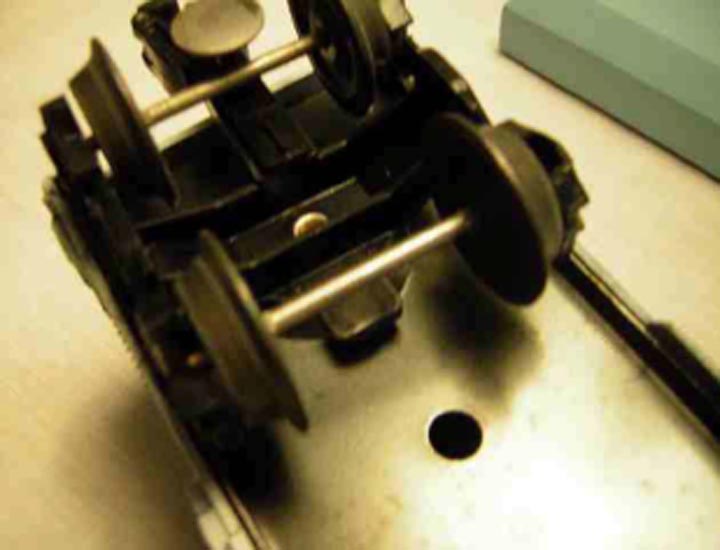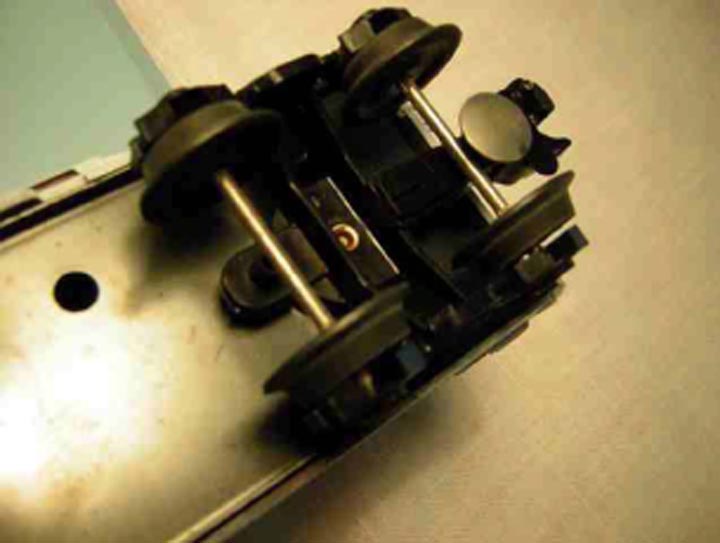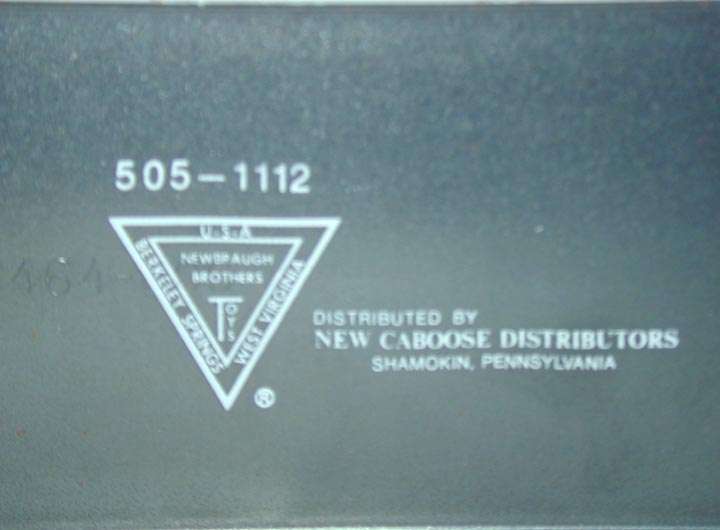Description of My Three Mile Island Boxcar
By Bill Greco
The Three Mile Island boxcar was acquired in November 1979 at an Atlantic Division TCA meet held at the Westover Country Club.
The car body is a 9400 series with the 9700 series end plate. When Fundimensions changed from the 9700 series to the 9400 series, the firm never revised the end plate. Even later five-digit boxcars made by Lionel Trains Inc. (LTI) carried this end plate. The original 9700 series boxcars were produced from 1972 to 1978. The 9400 series were produced from 1978 to 1986.
Rivet detail is not present on the car body. (Rivet detail was restored to Lionel boxcars starting with the 19200 series, 19228 Cotton Belt and 19233 Southern Pacific)
The car has a plastic top door guide and the lower end of the door has two plastic hook extensions which slide on a sill molded to the car body.
The frame is stamped metal with two ¼” holes (the holes were part of the original Lionel Die set and intended for wiring).
Side note: Some 6464 series boxcars have the two holes on a flat frame and other original 6464’s have a raised bubble with the two holes while still other 6464 series cars have a flat frame without any holes.
Lionel 00-6464-009 is stamped into the bottom of the frame.
A sign on top of the red door reads “Do Not Open”.
The underside of the frame has lettering which reads “Berkley Springs West Virginia USA” around the outer edges of the triangle with “Newbraugh Brothers Toys” printed within the double triangle. The letters 505-1112 are printed above the triangle.
The PVP Company is printed to the right of the triangle with a diamond shaped figure.
The trucks side frames are of plastic made by Fundimensions and modeled after the Symington-Wayne XL-70 high speed railroad trucks. The trucks are smooth topped when viewed from the side.
One side of the boxcar has a truck with a small, flat, square-shaped tab at the rear of the truck.
The other side of the boxcar has rounded projection with a blind hole in a raised peg. The car was purchased brand new and the difference of the two trucks is puzzling.
The uncoupling device consists of a large chrome headed round piece of steel which is pulled down magnetically to open the coupler.
The trucks have blackened wheels with shiny chrome axles.
The coupler shank for manual uncoupling comes straight out from the truck frame.
EDITOR’S NOTE: I also own this car and here is a photo of the undercarriage on mine:












